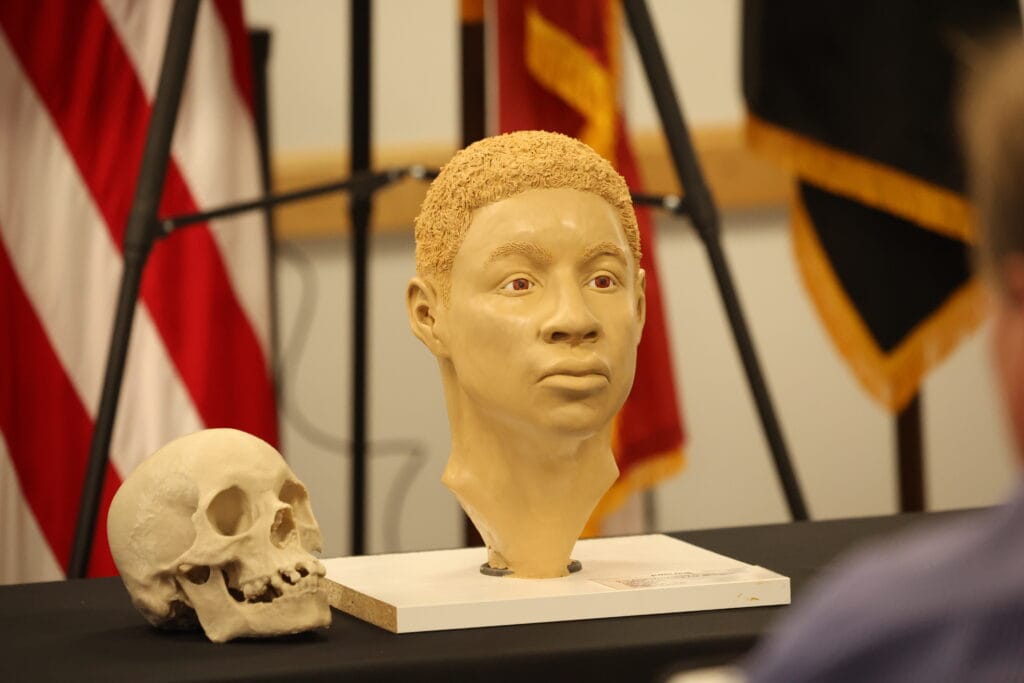More than 23 years after skeletal remains were discovered in Stark County, authorities have identified the man as Anthony Bernard Gulley of Pontiac, Michigan. The breakthrough was announced Wednesday by Ohio Attorney General Dave Yost and Stark County Sheriff Eric Weisburn, crediting the development to decades of investigative persistence and advancements in DNA technology.
“The answer to this mystery may have remained lost in time if not for the tenacity of investigators and the groundbreaking power of genetic genealogy,” Yost said. “My heart goes out to the family, and although they finally have answers, they undoubtedly still have broken hearts.”
Gulley, who was 24 years old at the time, was reported missing from Pontiac on Sept. 11, 1994. Authorities believe he was a homicide victim.
“For those of us at the Stark County Sheriff’s Office, we never lost sight of the fact that this unidentified man likely had a family who was missing him and didn’t know what had happened to him, and that kept us motivated,” Weisburn said. “We are honored to have been part of the team that gave him back his name — Anthony Gulley — and provided some answers to his family.”
Gulley’s disappearance was linked to an investigation involving George Frederick Washington, a 22-year-old Michigan man with ties to Akron. Washington was a suspect in two rapes and an armed robbery and was also believed to be involved in Gulley’s disappearance. Authorities later discovered Gulley’s burned car in Akron on Sept. 12, 1994. Detectives suspected that Washington may have returned to Akron to dispose of Gulley’s body.
However, on Sept. 30, 1994, before law enforcement could question him, Washington died by suicide as officers attempted to take him into custody. Despite continued efforts, Gulley’s body was not found at the time.
On Dec. 22, 2001, skeletal remains were discovered along Trump Avenue SE in Canton. Authorities, lacking the advanced DNA technology available today, were unable to identify the remains, which became known as Stark County John Doe.
In 2023, investigators renewed efforts to identify the remains. On Sept. 7, the Ohio Bureau of Criminal Investigation (BCI) and the Stark County Sheriff’s Office released a clay facial reconstruction of the John Doe. The agencies also collaborated with Ohio State University’s Advanced Computing Center for the Arts and Design to generate digital images of what the man might have looked like.
Simultaneously, forensic scientists at BCI worked to develop a DNA profile from the remains, but no match was found in the Combined DNA Index System (CODIS). Investigators then turned to the DNA Doe Project, a nonprofit organization specializing in genetic genealogy, to assist in the case.
Through investigative genetic genealogy and subsequent confirmation testing, the remains were identified as Gulley’s. However, many questions remain unanswered, including the circumstances of his death and why his body was left undiscovered for seven years.
“Today – after decades as a John Doe – Anthony Gulley finally reclaims his true identity,” Yost said. “That closure makes all the hard work worthwhile.”
Gulley is the second unidentified individual in recent years to be identified through collaborative efforts between BCI, the Stark County Sheriff’s Office, the Stark County Coroner’s Office, and the DNA Doe Project. In July 2024, another John Doe, whose body was found in March 2020, was identified as Michael Leach.




